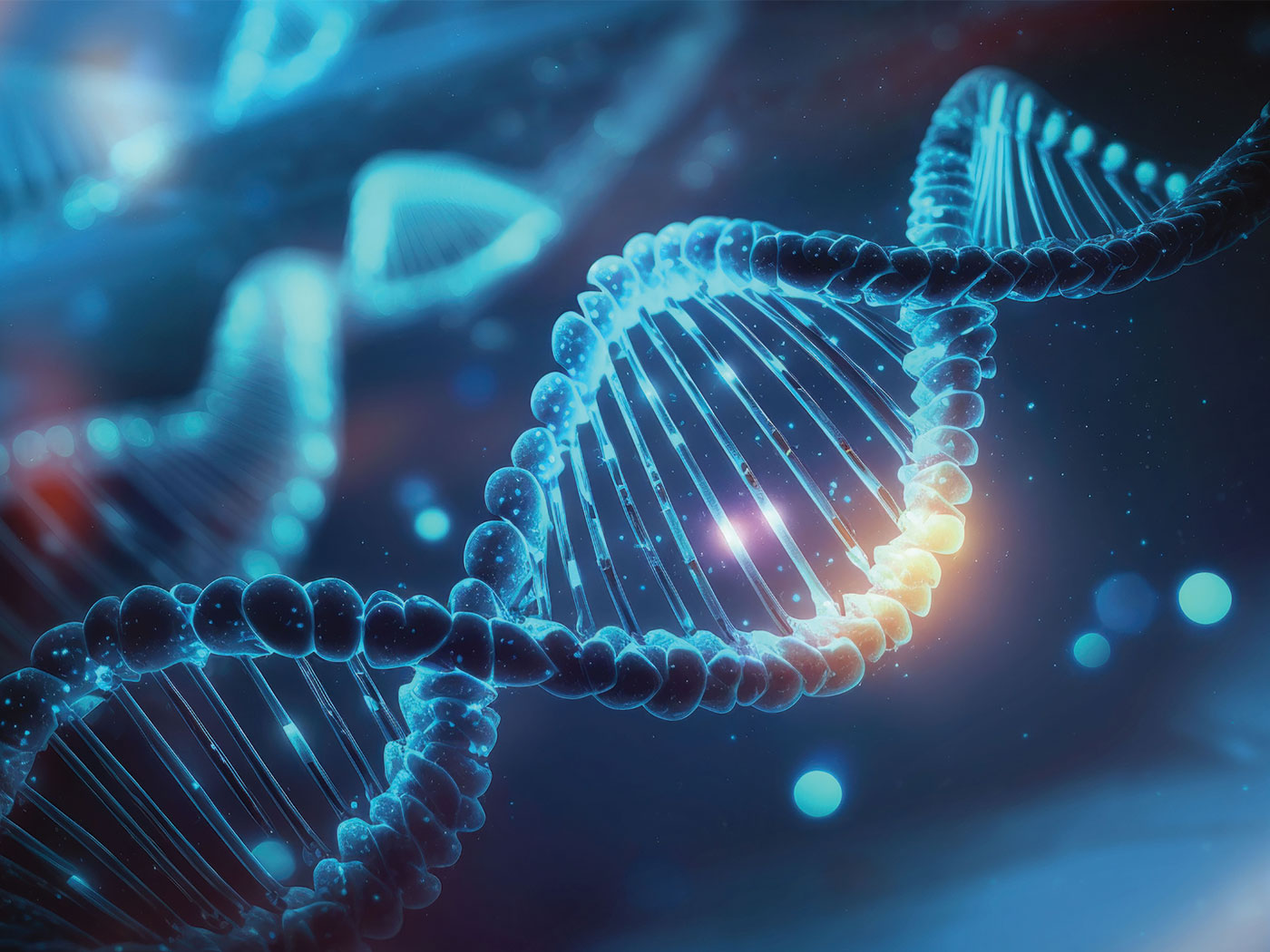We have noted from the statements of leading evolutionary scientists that no true vertical evolution from one kind of organism to a more complex kind has ever been observed in all human history.
Similar admissions from evolutionists have acknowledged that no examples of such evolutionary transitions have yet been documented in any of the billions of fossilized remains from the supposed geological ages of the past.
Actually, these negative evidences against evolution are, at the same time, strong positive evidences for special creation. They are, in fact, specific predictions based on the creation model of origins.
Creationists would obviously predict ubiquitous gaps between created kinds, though with many varieties capable of arising within each kind, in order to enable each basic kind to cope with changing environments without becoming extinct. Creationists also would anticipate that any "vertical changes" in organized complexity would be downward, since the Creator (by definition) would create things correctly to begin with. Thus, arguments and evidences against evolution are, at the same time, positive evidences for creation.
The Equivocal Evidence from Genetics
Nevertheless, because of the lack of any direct evidence for evolution, evolutionists are increasingly turning to dubious circumstantial evidences, such as similarities in DNA or other biochemical components of organisms as their "proof" that evolution is a scientific fact. A number of evolutionists have even argued that DNA itself is evidence for evolution, since it is common to all organisms. More often is the argument used that similar DNA structures in two different organisms proves common evolutionary ancestry.
Neither argument is valid. There is no reason whatever why the Creator could not or would not use the same type of genetic code based on DNA for all His created life forms. This is evidence for intelligent design and creation, not evolution.
The most frequently cited example of DNA commonality is the human/chimpanzee "similarity," noting that chimpanzees have more than 90% of their DNA the same as humans. This is hardly surprising, however, considering the many physiological resemblances between people and chimpanzees. Why shouldn't they have similar DNA structures in comparison, say, to the DNA differences between men and spiders?
Similarities…whether of DNA, anatomy, embryonic development, or anything else…are better explained in terms of creation by a common Designer than by evolutionary relationship. The great differences between organisms are of greater significance than the similarities, and evolutionism has no explanation for these if they all are assumed to have had the same ancestor. How could these great gaps between kinds ever arise at all, by any natural process?
The apparently small differences between human and chimpanzee DNA obviously produce very great differences in their respective anatomies, intelligence, etc. The superficial similarities between all apes and human beings are nothing compared to the differences in any practical or observable sense.
Nevertheless, evolutionists, having largely become disenchanted with the fossil record as a witness for evolution because of the ubiquitous gaps where there should be transitions, recently have been promoting DNA and other genetic evidence as proof of evolution. However, this is often inconsistent with, not only the fossil record, but also with the comparative morphology of the creatures. Commenting on a few of the numerous anomalous results in the genetic story, Dr. Roger Lewin summarizes the situation thus, as noted in Part I of this series:
The overall effect is that molecular phylogenetics is by no means as straightforward as its pioneers believed. . . . The Byzantine dynamics of genome change has many other consequences for molecular phylogenetics, including the fact that different genes tell different stories.1
Lewin mentions just a few typical contradictions yielded by this type of evidence in relation to more traditional Darwinian "proofs."
The elephant shrew, consigned by traditional analysis to the order insectivores . . . is in fact more closely related to . . . the true elephant. Cows are more closely related to dolphins than they are to horses. The duckbilled platypus . . . is on equal evolutionary footing with . . . kangaroos and koalas.2
There are many even more bizarre comparisons yielded by this approach.
The abundance of so-called "junk DNA" in the genetic code also has been offered as a special type of evidence for evolution, especially those genes which they think have experienced mutations, sometimes called "pseudogenes."3 However, evidence is accumulating rapidly today that these supposedly useless genes do actually perform useful functions.
Enough genes have already been uncovered in the genetic midden to show that what was once thought to be waste is definitely being transmitted into scientific code.4
It is thus wrong to decide that junk DNA, even the so-called "pseudogenes," have no function. That is merely an admission of ignorance and an object for fruitful research. Like the so-called "vestigial organs" in man, once considered as evidence of evolution but now all known to have specific uses, so the junk DNA and pseudogenes most probably are specifically useful to the organism, whether or not those uses have yet been discovered by scientists.
At the very best this type of evidence is strictly circumstantial and can be explained just as well in terms of primeval creation supplemented in some cases by later deterioration, just as expected in the creation model.
The real issue is, as noted before, whether there is any observable evidence that evolution is occurring now or has ever occurred in the past. As we have seen, even evolutionists have to acknowledge that this type of real scientific evidence for evolution does not exist.
A good question to face is: Why are all observable evolutionary changes either horizontal and trivial (so-called microevolution) or downward toward deterioration and extinction? The answer seems to be found in the universally applicable laws of the science of thermodynamics.
Evolution Is Impossible
The main scientific reason why there is no evidence for evolution in either the present or the past (except in the creative imagination of evolutionary scientists) is because one of the most fundamental laws of nature precludes it. The law of increasing entropy…also known as the second law of thermodynamics…stipulates that all systems in the real world tend to go "downhill," as it were, toward disorganization and decreased complexity.
This law of entropy is, by any measure, one of the most universal, best-proved laws of nature. It applies not only in physical and chemical systems, but also in biological and geological systems…in fact all systems, without exception.
No exception to the second law of thermodynamics has ever been found…not even a tiny one. Like conservation of energy (the 'first law'), the existence of a law so precise and so independent of details of models must have a logical foundation that is independent of the fact that matter is composed of interacting particles.5
The author of this quote is referring primarily to physics, but he does point out that the second law is "independent of details of models." Besides, practically all evolutionary biologists are reductionists…that is, they insist that there are no "vitalist" forces in living systems, and that all biological processes are explicable in terms of physics and chemistry. That being the case, biological processes also must operate in accordance with the laws of thermodynamics, and practically all biologists acknowledge this.
Evolutionists commonly insist, however, that evolution is a fact anyhow, and that the conflict is resolved by noting that the earth is an "open system," with the incoming energy from the sun able to sustain evolution throughout the geological ages in spite of the natural tendency of all systems to deteriorate toward disorganization. That is how an evolutionary entomologist has dismissed W. A. Dembski's impressive recent book, Intelligent Design. This scientist defends what he thinks is "natural processes' ability to increase complexity" by noting what he calls a "flaw" in "the arguments against evolution based on the second law of thermodynamics." And what is this flaw?
Although the overall amount of disorder in a closed system cannot decrease, local order within a larger system can increase even without the actions of an intelligent agent.6
This naive response to the entropy law is typical of evolutionary dissimulation. While it is true that local order can increase in an open system if certain conditions are met, the fact is that evolution does not meet those conditions. Simply saying that the earth is open to the energy from the sun says nothing about how that raw solar heat is converted into increased complexity in any system, open or closed.
The fact is that the best known and most fundamental equation of thermo-dynamics says that the influx of heat into an open system will increase the entropy of that system, not decrease it. All known cases of decreased entropy (or increased organization) in open systems involve a guiding program of some sort and one or more energy conversion mechanisms.
Evolution has neither of these. Mutations are not "organizing" mechanisms, but disorganizing (in accord with the second law). They are commonly harmful, sometimes neutral, never beneficial (at least as far as observed mutations are concerned). Natural selection cannot generate order, but can only "sieve out" the disorganizing mutations presented to it, thereby conserving the existing order, but never generating new order. In principle, it may be barely conceivable that evolution could occur in open systems, in spite of the tendency of all systems to disintegrate sooner or later. But no one yet has been able to show that it actually has the ability to overcome this universal tendency, and that is the basic reason why there is still no bona fide proof of evolution, past or present.
From the statements of evolutionists themselves, therefore, we have learned that there is no real scientific evidence for real evolution. The only observable evidence is that of very limited horizontal (or downward) changes within strict limits. Evolution never occurred in the past, is not occurring at present, and could never happen at all.
* This article is the second of a two-part series. Click here to read part 1.
References
- Roger Lewin, "Family Feud," New Scientist (vol. 157, January 24, 1998), p. 39.
- Ibid., p. 36.
- Rachel Nowak, "Mining Treasures from 'Junk DNA'," Science (vol. 263, February 4, 1994), p. 608.
- bid.
- E. H. Lieb and Jakob Yngvason, "A Fresh Look at Entropy and the Second Law of Thermodynamics," Physics Today (vol. 53. April 2000), p. 32.
- Norman A. Johnson, "Design Flaw," American Scientist (vol. 88. May/ June 2000), p. 274.
Dr. Henry M. Morris (1918-2006) was Founder and President Emeritus of ICR.
Cite this article: Morris, H. 2001. The Scientific Case Against Evolution: A Summary Part 2. Acts & Facts. 30 (1).
















